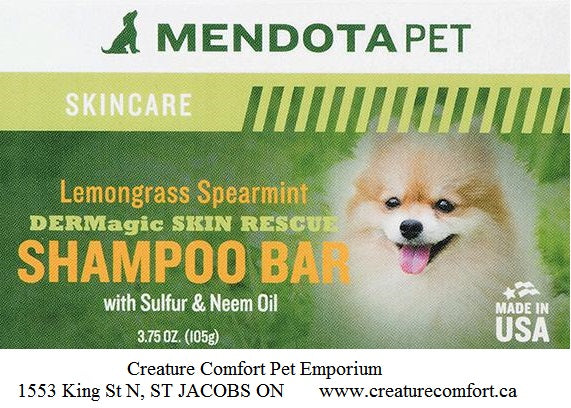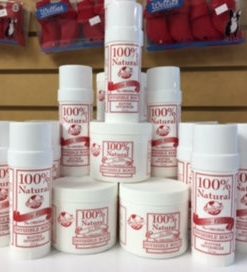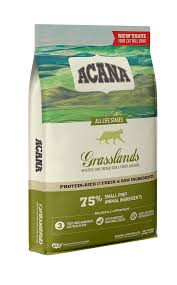Dermagic Skin Rescue Shampoo Bar Faire
$ 19,99 $ 11,99
Currently backordered, please see Dermagic Peppermint & Tea Tree Shampoo Bar as an alternative
Pet grooming made simple! Lemongrass & Spearmint Essential Oils combine with the healing of Sulfur and Neem Oil to bring your dog relief with this easy to use, organic shampoo bar.
The Skin Rescue Bars contain no preservatives, nor sulfates, nor harsh chemicals, providing the perfect first step to restoring your dog’s skin to good health. Bathing squirmy pets with one hand does double duty with a shampoo bar! Our bars lather beautifully with no sulfates, rinse easily and cleanly, no more spills and they smell wonderful. One 3.5 oz bar will outlast a 12-ounce bottle of liquid shampoo which also saves you money.
This amazing soap bar is designed to work together with our Skin Rescue Lotion
Be sure to order both products for optimum treatment and relief.
Keep their coat fresh between baths by brushing and combing daily with our Skin Rescue Grooming Spritz.
Ingredients: Saponified Coconut*, Olive*, Castor*, Sunflower*, Jojoba*, and Rice Bran Oils*, Neem Oil*, Organic Aloe Vera Juice, Lemongrass Essential Oil, Spearmint Essential Oil, Sulfur, Stearic Acid & Vitamin E. (* Certified Organic)
All DERMagic products are Made in the USA. These wonderful shampoo bars are handmade using organic ingredients.
Black Skin Disease (Alopecia X)?
Black Skin Disease ie Alopecia X, is little understood. This condition in animals is called Alopecia X because the cause(s) of this condition are still relatively unknown and the treatments tend to be by trial and error (or, as some would suggest, random). This disease can be easily confused with “Cushing’s Disease.”
The disease manifests initially as thinning hair, sometimes accompanied by itchy skin and sometimes not, followed by bald patches, followed by blackened or dark gray skin. Eventually, the dog can become completely bald with deep charcoal-gray skin. Often, the dog will smell very yeasty and strong.
Black Skin Disease can manifest in other ways and other places also, often beginning on the belly and inside of the back legs/groin area. Generally, this type of disease is associated with overall itchiness and skin eruptions. A bad odor might be present, causing the owner to bathe the dog more and more frequently, making the disease worse and the dog even itchier. When itching is present, veterinarians will often prescribe steroids (cortisone or prednisone) to reduce the inflammation. Please note that we never recommend steroids, as they disrupt ie suppress the dog’s natural immune system and the disease will become worse as well as leaving your dog’s immune system compromised and risking further diseases occurring. The use of steroids may also encourage mange mites and bacteria to thrive, with grave results.
A very early stage of this type of Black Skin Disease starts with only small black or rusty-colored dots on the skin, usually on the belly and especially around the genitals and teats. However, these specks are an early indicator of a very serious attack on your dog by some infecting agent, whether it’s a fungus (or yeast), bacterium, or follicular mite. It will not go away or get better with time, and is usually accompanied by mild, occasional itching. A single flea bite can give rise to this situation, that nasty flea injecting who knows what kind of pathogen just under your pets skin.
Yeast (Malassezia dermatitis).
Yeast is a fungus, and it is always present on pets as part of the normal flora of the body, both internally and externally. As long as the body is in balance, all is well. However, when the immune system becomes imbalanced, due to poor quality food, use of pesticides, flea/tick/heartworm treatments, over-vaccinating, or when the dog is given antibiotics, or is shaved, or scratches himself, yeast can invade the skin and go underground where it thrives in the hair follicles and throughout the body.
On some dogs you can observe the very earliest signs of yeast when it manifests as little black or brownish specs on the underbelly, around the genitals, or where the legs join the body. These often go unnoticed, being mistaken for dirt, flea specks or simply part of the ageing process.
By the time you see this, the yeast infection is systemic throughout the body, similar to seeing a mushroom pop up on the forest floor. By this time the rhizomes (or roots) of the fungus have already covered acres underground. Yeast is the same. And similarly, it comes and goes in a typical annual cycle, waxing and waning with the seasons but it never goes away on its own.
Symptoms of a Yeast infection: Any one of these is a very strong indicator, regardless of how it got started. If there are two or more of these symptoms, it’s pretty much a given that the dog is systemically infected with yeast.
Chewing or licking the feet, and dark rusty-red hair between the toes. When a dog chews his feet, there’s always a good reason. There’s an itch, a cut, a broken toenail, or something that’s bothering him. But foot- chewing is almost always because there’s a yeast infection between the toes and in the nail beds. The hair is red or rusty-colored because of the yeast, not because of the licking.
Scratching the ears, or head shaking is typically caused by yeast or bacterial infection in the ears, though mites also cause intense itching in the ears.
Lethargy and loss of appetite. There are many reasons for this, but when combined with one or more of the symptoms in this list, a yeast over bloom is possibly the cause.
Cyclic manifestation of symptoms (appearing in the spring and going away in the fall)
Hair loss on the tail and upper back. There can be many reasons for this, but yeast is often one of the problems here.
Speckles (like tiny black dots) on the underbelly or rust-coloration around the genitals. Daily (or at least weekly) grooming should reveal this early indicator of yeast.
A foul funky smell and greasy hair (seborrhea), often accompanied by heavy dandruff. This is an active yeast infection of the hair follicles.
Baldness from having been closely shaved. When a dog is shaved, even for surgery, yeast can literally be injected under the skin by the hot blade, and it will kill the hair follicles eventually.
So, how do you know if its a yeast infection or an allergy? Or something else?
It isn’t an easy diagnosis, but if the condition responds well to a natural topical antifungal, the hair grows back, the black skin disappears, the itching and licking stop, and the underbelly returns to a normal pinkish white, that should tell you something. It could well have been an allergic reaction to something that started all this, like a bug or flea bite or a bad reaction to grain in food, for example. But what then happens is that the local immune system doesn’t function properly and this allows the yeast to bloom and invade.
Prompt Shipping and Professional Packing
We provide a variety of shipping options thanks to our long-standing partnerships with UPS, FedEx and DHL. Our warehouse staff are highly trained and will pack the goods according to our precise and exact specifications. Your goods will go through a thorough inspection and be properly secured before they are shipped. We ship to thousands customers every day across multiple countries. This shows our commitment to being the largest retailer on the internet. Both Europe and the USA have distribution and warehouse centers.
Note: Orders with more than one item will be assigned a processing date in accordance with the item.
Prior to shipment, all purchased items will be thoroughly examined. Most orders are now shipped within 48 hours. It is expected that delivery will take between 3 and 7 days.
Returns
The stock is dynamic and we do not control it completely because of the fact that many stakeholders are involved, including our warehouse and factory. Stocks can be changed at any moment. It is possible that the stock may run out after the order has been made.
Our policy runs for 30 days. We cannot replace or refund your purchase when it's been 30 days since you purchased it.
You can only return a product when it's unopened and in the same condition when you received it. It must also be in the original packaging.
Related products
Uncategorized
Uncategorized
Uncategorized
Uncategorized
Uncategorized
Uncategorized
Uncategorized
Uncategorized
Uncategorized
Uncategorized
Uncategorized
Uncategorized
Uncategorized
Uncategorized
Uncategorized
















































